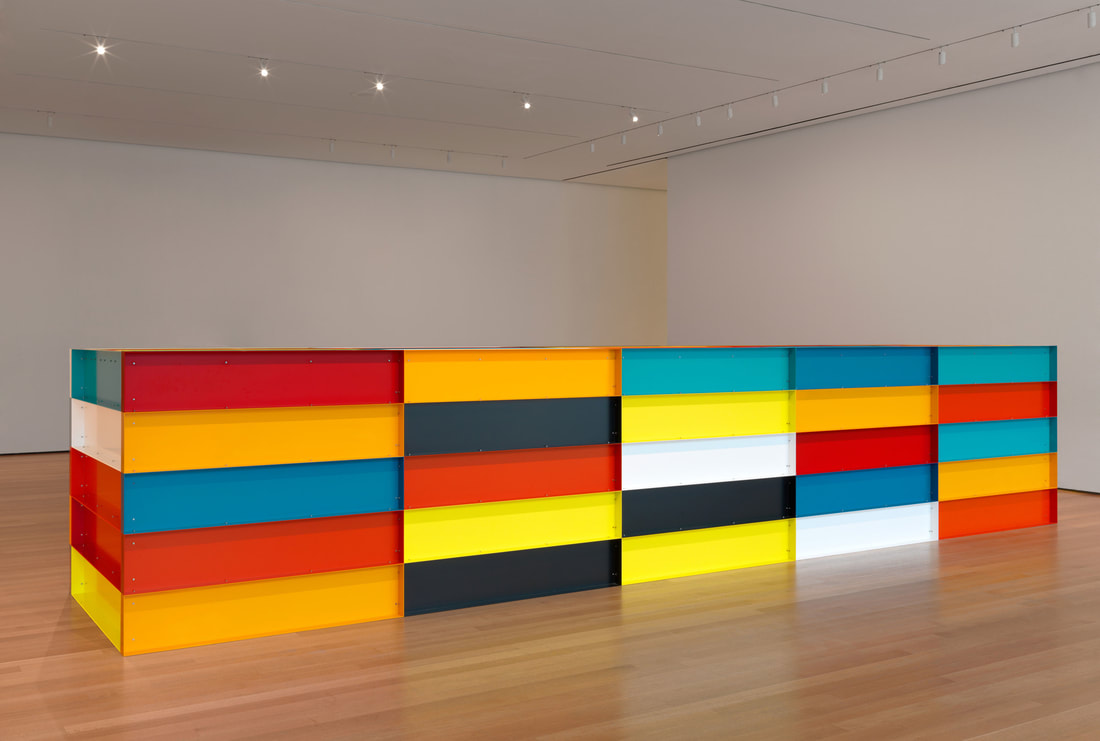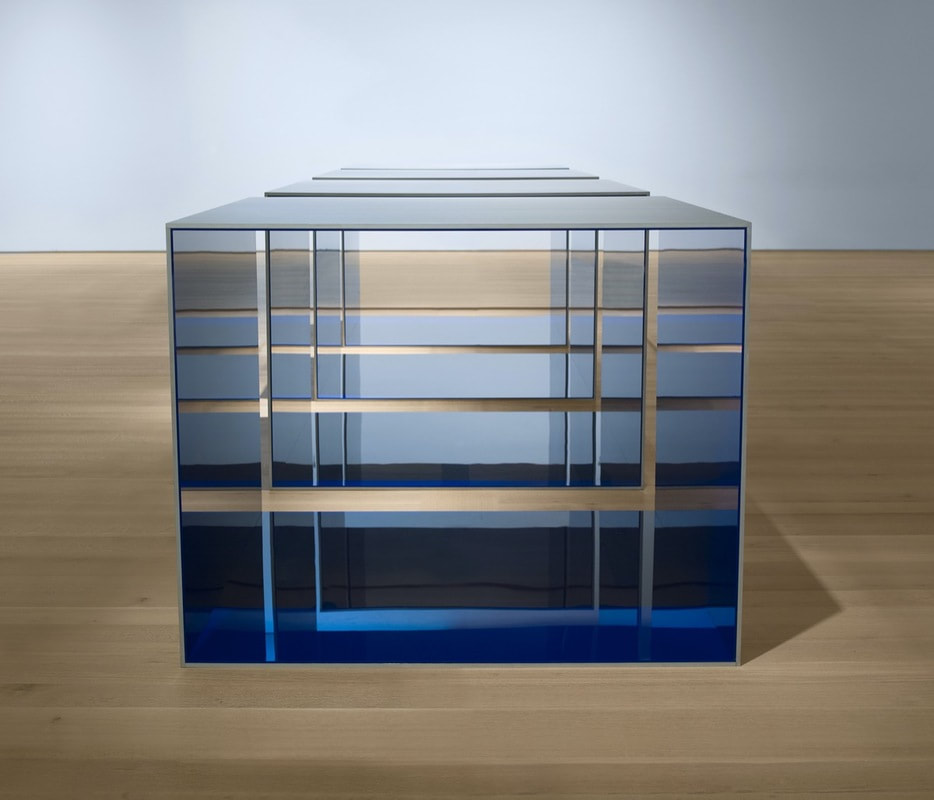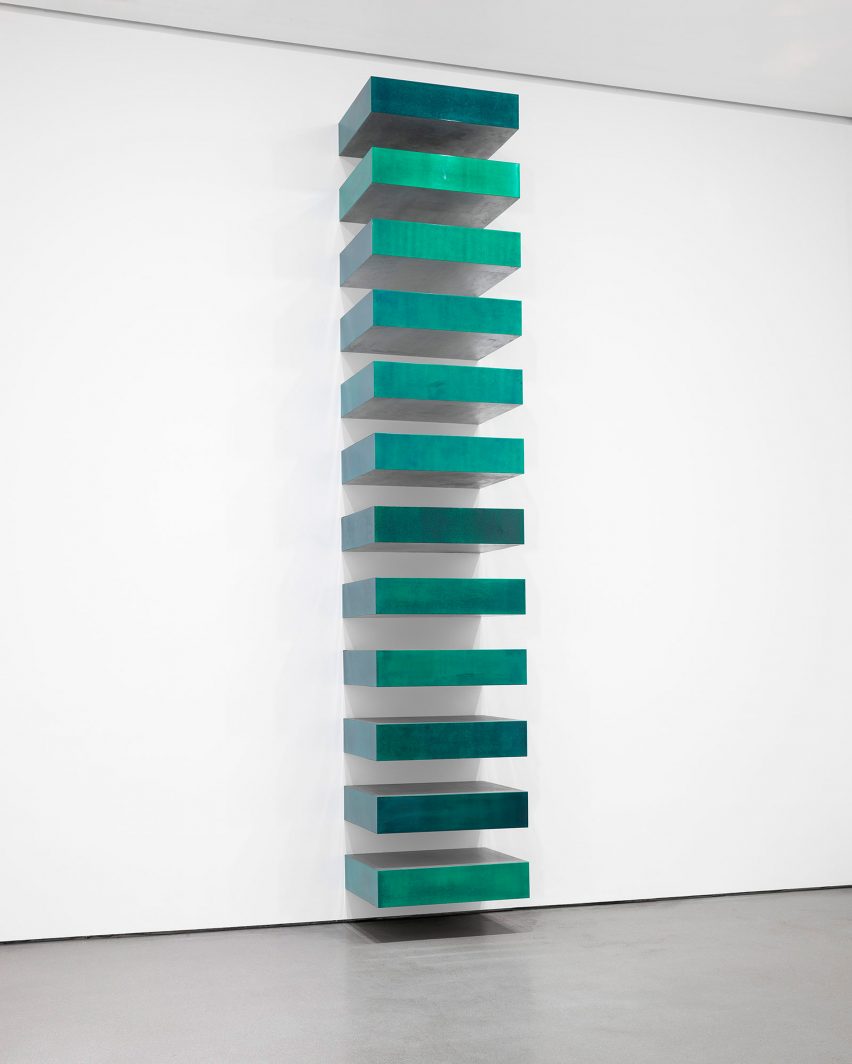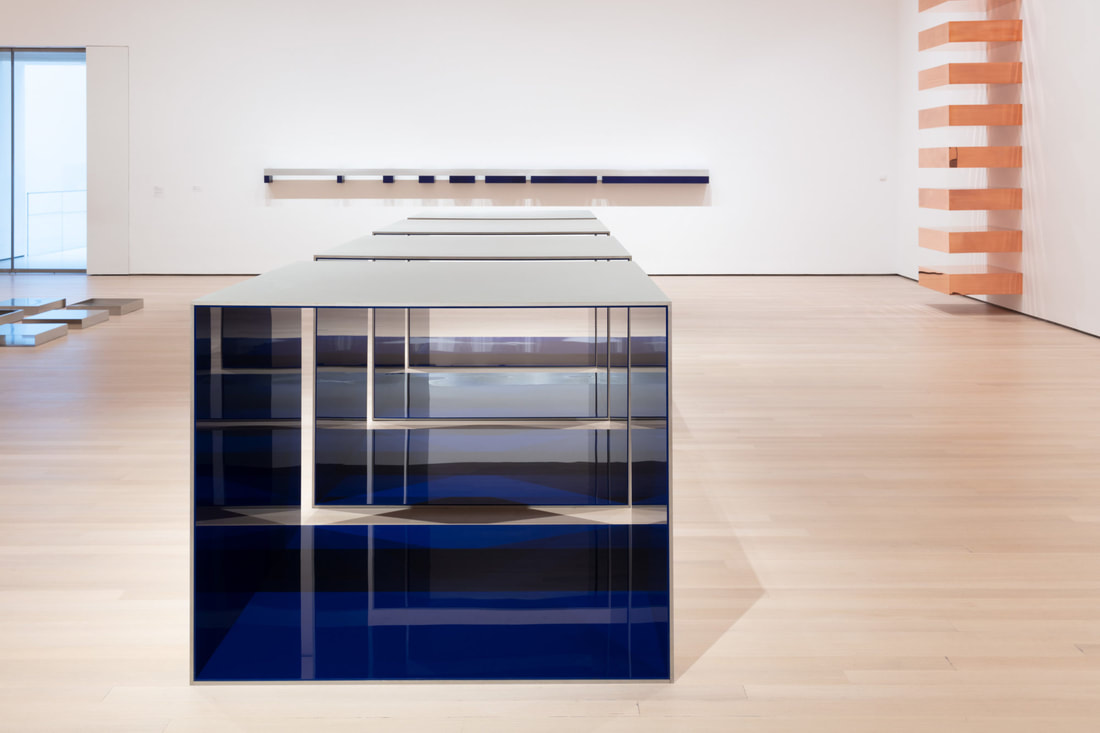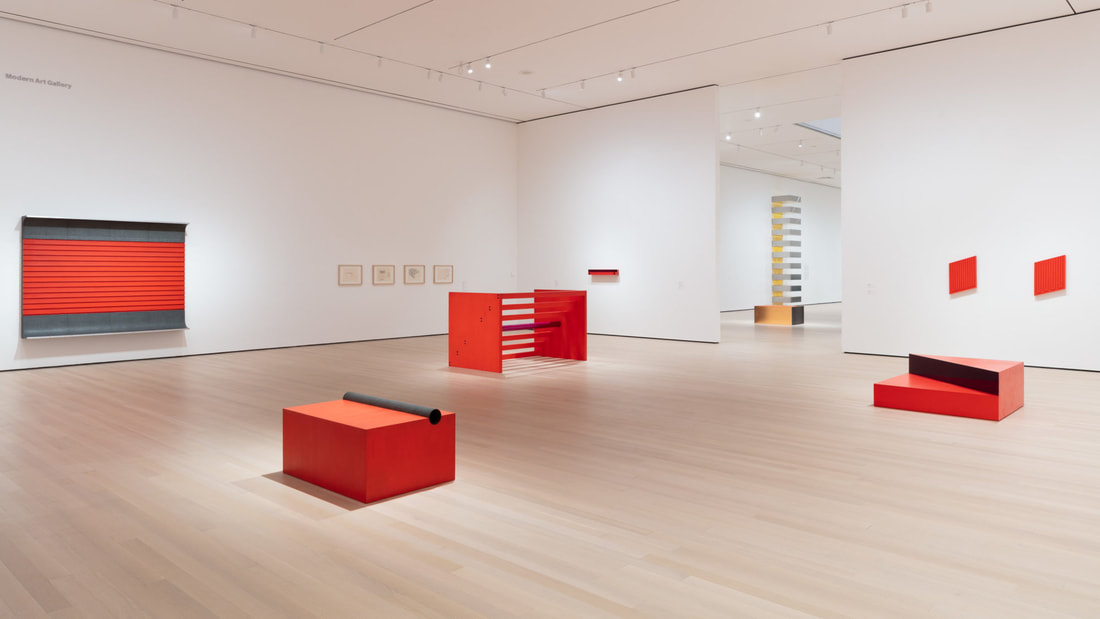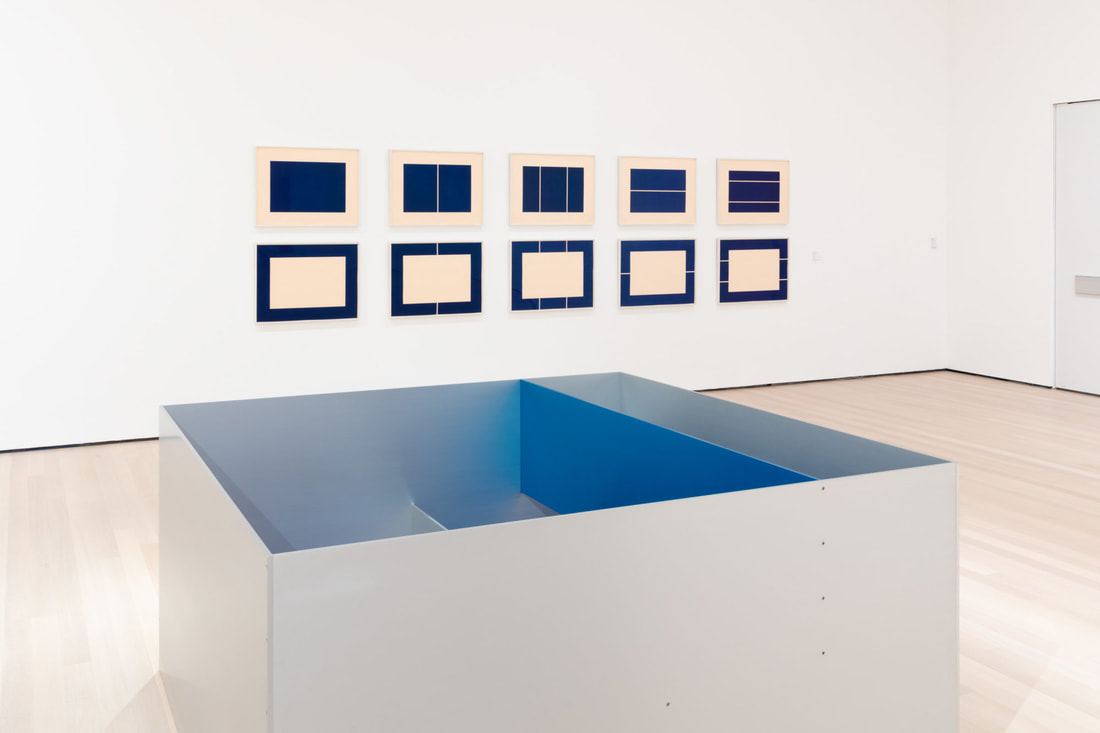When you think of Donald Judd (1928-94), you think of essence, power, and architecture. W
ith sculptures in the form of boxes and units in metal and wood, Judd has become synonymous with space, freedom, and perfection. The exhibition, entitled simply ‘Judd,’ taken the entire upper floor of MoMA, is divided chronologically into four major periods in the evolution of the revolutionary artist, covering the entire scope of his oeuvre. The installation is not only breathtaking with its airy spaces, colorful compositions, and the minimalist severe sculptures, but also demonstrates that Judd looks more timeless today than he has ever been.Donald Judd was a part of a generation of artists, who in the 1960s, sought to turn away from Abstract Expressionism and invent a new type of art while using new methods. We see Judd in his journey from the early 60s, when he made abstract, red paintings, gradually moving to his three-dimensional signature sculptures: objects, stacks, and boxes, capturing his thinking outside of the box. During 1970s he moved the major part of his practice to Marfa, a small town in South-West Texas, where he was finally able to create all work as site specific permanent installation. His pieces became larger, more structural, more architectural, more poetic, and he called them ‘specific objects,’ titling them all ‘Untitled.’ Judd claimed that his sculptures were free of references, free of handmade, factory fabricated.
As you walk outside of the show, you enter the “reading room,” an open space containing Judd-designed furniture and a shop. You can sit on his wooden chairs and browse the exhibition catalog and other publications, and recognize that it is the perfect show to reopen New York. You can in inhale and exhale, because the Big Apple is back to life, and as Jerry Seinfeld famously said this week, New York is not dead. It is alive, inspiring, and as energetic as ever before.
Above: Installation view of Judd, The Museum of Modern Art, New York, March 1–July 11, 2020. Digital Image © 2020 The Museum of Modern Art, New York. Photo by Jonathan Muzikar.
